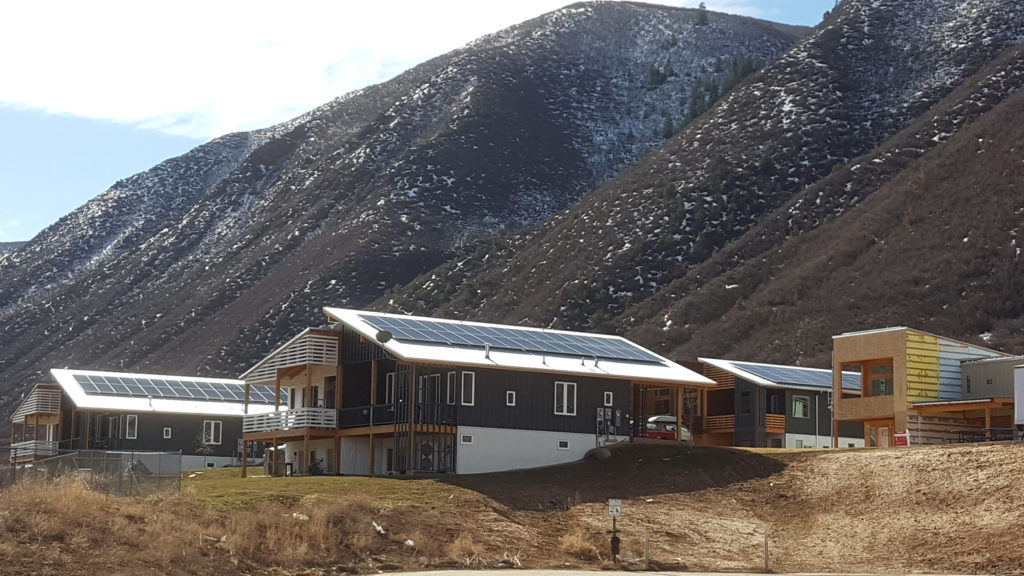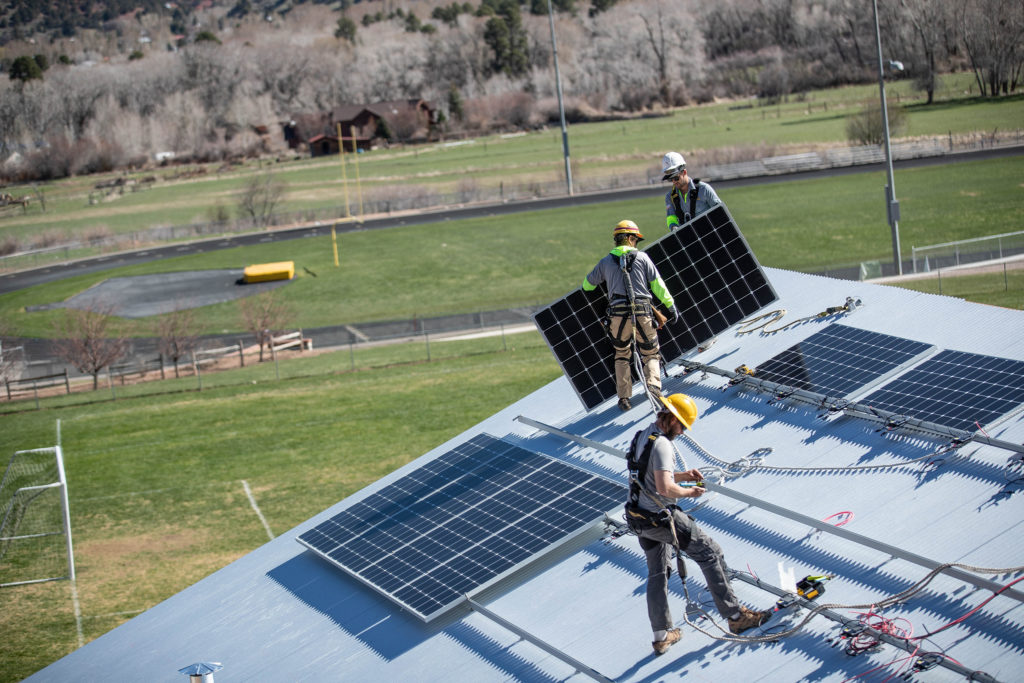
In Colorado, the intrepid spirit that led discoverers to conquer the state’s highest peaks lives on in the frontier of energy innovation.
This time, it’s a development of 27 smart homes that’s doing the pioneering. The all-electric, net-zero residences also provide a path to home ownership for the local workforce near the pricey ski town of Aspen.
“It’s an immigrant’s dream to own a house in the U.S., and I like that I can come home after work and live in a home of the future, where everything is powered by the sun,” said Ana Quiceno. The kindergarten teacher originally from Colombia has lived in a townhome in the Basalt Vista housing development served by Holy Cross Energy for almost two years.
Outfitted with rooftop solar panels and on-site battery storage, these ”homes of the future” are also innovative because of the far-reaching and varied partnership led to their construction, said Adaora Ifebigh, who heads NRECA’s Advancing Energy Access for All initiative.
That initiative emphasizes “the power of partnerships and works to identify and help establish partnerships to advance community solutions for NRECA’s co-ops through various research projects,” said Ifebigh. Holy Cross Energy’s partners in the Basalt Vista project include Habitat for Humanity, the Roaring Fork School District, Pitkin County, the Basalt town government and various solar manufacturers.
The Glenwood Springs-based co-op donated 8-kilowatt rooftop solar panels and other energy-efficient equipment, including smart inverters, EV charger hookups, hot water heaters and smart appliances and controllers. Member rebates are also part of the package, and co-op staff meet regularly with homeowners to incorporate the technology into their daily routines.

“There’s a definite learning curve when you move into an all-electric home,” said Chris Bilby, a research engineer at Holy Cross Energy.
“It’s a different beast almost. You can turn everything on and you can end up with extremely high bills, or you can learn how to manage your new home in a way that’s a little bit more grid-friendly and saves money.”
Since the first family moved into the Basalt Vista development in 2019, the project has attracted widespread attention. It’s been the subject of a National Renewable Energy Laboratory study and a finalist for a national magazine’s “solar project of the year.”
Closer to home, the development has served as a learning lab to help the co-op make emerging technologies available to more people as it works toward meeting its goal of 100% green power by 2030. For example, the success of the program’s residential battery component has enabled the co-op to offer all members a chance to buy one through Power +, an on-bill payment program.
“We opened it up March 1, and so far, we’ve had 20 people apply in the last six weeks,” said Bilby, noting that a battery could cost upward of $25,000.
Priced at $250,000 to $345,000, the townhomes have put a dent in Aspen’s affordable housing shortage by being available only to schoolteachers and county workers. Other contributions include $3 million in land from the Roaring Fork School District and $3 million in infrastructure from Pitkin County. Habitat for Humanity provided subsidies to keep the residences affordable.
The focus on public sector employees is a quality-of-life issue, said Jenna Weatherred, the co-op’s vice president of member and community relations. “They come in young and stay when they’re young and when they get a little bit older and start families, very often we lose them.”
Meanwhile, Quiceno has been getting better at “counting and saving kilowatts in the summer and then using them in the winter” for some “sweet” savings on her electric bill. The co-op, she said, has been a big help in the process.
“I feel so lucky and blessed to live in this place,” said Quiceno. “By having this house, I’m doing my part to help the planet.”
Victoria A. Rocha is a staff writer at NRECA.